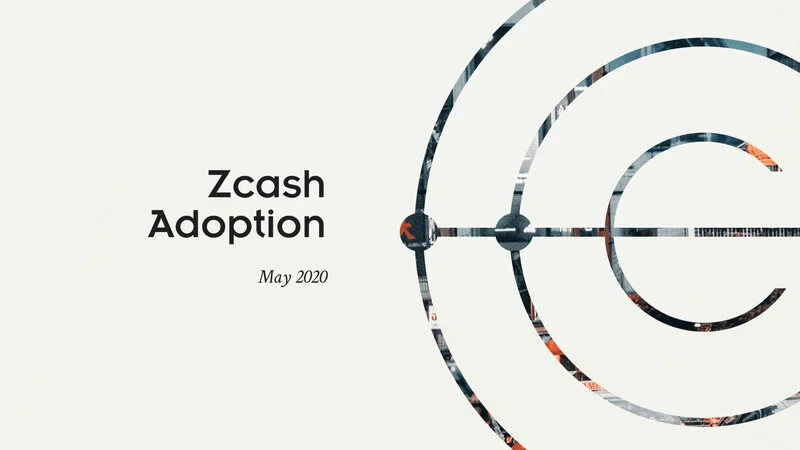An Autopsy of a 250% Rally: Deconstructing the Zcash Anomaly
For years, Zcash (ZEC) was a ghost in the machine. A once-hyped privacy coin that had faded into the background noise of the crypto markets, trading sideways in a state of seeming irrelevance. Then, something broke. The ZEC/USD chart looks less like a gradual accumulation and more like a seismic event—a flatline of years-long apathy punctuated by a near-vertical line.
The numbers are startling. A surge of over 250% in a matter of weeks, pushing the price to multi-year highs around $173, with some exchanges showing wicks closer to $194. This isn't a minor altcoin pump; it’s a fundamental re-pricing event. And when an asset dormant for so long moves with such velocity, my first instinct is to ignore the hype and dissect the inputs. The question isn't just what happened, but whether the drivers justify the magnitude of the move.
The rally appears to be a confluence of three distinct vectors: a narrative reversal, a technical re-evaluation, and a macro tailwind. Separately, each is just a data point. Together, they’ve created a powerful feedback loop that has traders scrambling and analysts revising their models.
The Reversal and the Re-Evaluation
The first clear catalyst is the reversal from ShapeShift. In 2020, the centralized exchange delisted Zcash and other privacy coins, citing overwhelming regulatory pressure. It was a major blow, a signal that anonymity was becoming too toxic for compliant businesses. Now, ShapeShift—reborn as a community-governed DAO—has brought shielded Zcash transactions back into the fold, supported by a grant from the Zcash community (a $50,000 grant to support technical and marketing costs, to be precise).
On the surface, this is a simple relisting. But analytically, it's a profound narrative shift. The very entity that once capitulated to regulators has, under a new decentralized structure, embraced the technology it previously abandoned. This isn't just a business decision; it's a statement about the perceived viability of privacy protocols in the current environment. But does a $50,000 grant truly explain a complete reversal in strategy, or is this a signal of a broader, quieter shift in developer sentiment towards privacy tools?
This narrative shift coincided with a far more potent driver: a technical re-evaluation of Zcash’s core value proposition. For years, the default privacy coin in most minds was Monero. Yet, a compelling argument, articulated recently by MIT research scientist and Zcash co-founder Madars Virza, is gaining traction. He posits that Monero’s privacy model, based on ring signatures, is fundamentally weaker, an argument he lays out in Why Zcash Beats Monero And Bitcoin: MIT Research Scientist. Each Monero transaction hides the true sender among a small group of 16 decoys. As research has shown, various heuristics and statistical attacks can shrink that effective anonymity set significantly.

To use an analogy, Monero’s approach is like trying to hide in a small, fixed crowd at a party. With enough observation over time, an adversary can start to deduce who the real person of interest is. Zcash’s shielded pool, by contrast, is like hiding in the entire population of a city. Its zero-knowledge proofs verify transactions without revealing which specific prior "note" is being spent, meaning the anonymity set is the entire history of shielded transactions—millions of them. The mathematical gulf between an anonymity set of "around 4.2 in practice" and one numbering in the millions is not an incremental improvement; it's a categorical one.
I've analyzed risk models for years, and the concept of "post-quantum" security is usually relegated to theoretical whitepapers. Seeing it cited as a potential price driver in the wild is… unusual, to say the least. Yet, Zcash engineers argue that because shielded transaction data never touches the public ledger, it can't be retroactively broken by a future quantum computer. Monero’s on-chain data, however, could theoretically be unwound. This positions Zcash not just as private for today, but as a potential long-term store of private value, secure against threats that don't even exist yet. If Zcash’s tech is demonstrably superior, as its proponents claim, why did it underperform for so long? Was the market simply inefficient, or were there other, non-technical risks that correctly suppressed its valuation until now?
A Macro Catalyst for a Micro-Cap
These technical and narrative shifts are happening inside a vacuum-sealed pressure cooker. Regulators globally are tightening their grip. The European Union is marching toward a 2027 ban on anonymous crypto accounts and privacy-preserving tokens. This isn’t a distant threat; it's a clearly stated policy goal. Paradoxically, this mounting pressure is the macro tailwind Zcash needed. The more governments push for total financial transparency, the higher the premium on credible escape hatches.
This created the perfect environment for high-profile endorsements to act as an accelerant. When Naval Ravikant calls Zcash "insurance against Bitcoin," it resonates. It frames ZEC not as a speculative currency, but as a hedge. The market seems to agree. The establishment of Grayscale's Zcash trust provides a regulated, institutional-grade on-ramp, fueling speculation of an eventual ZEC ETF.
This is the final piece of the puzzle. The price surge, which has liquidated millions in short positions, wasn't just driven by retail chasing privacy. It was amplified by the scent of institutional access. The total appreciation was over 250%—though my own analysis of the daily charts suggests the peak-to-trough move was closer to 265%, depending on your chosen exchange data. That kind of move suggests bigger money is positioning itself. The question is, are they positioning for a future where privacy is a cherished right, or simply front-running a financial product?
The Asymmetric Bet on Anonymity
My final analysis is this: the Zcash rally is less about the current utility of its shielded pool and more about the market pricing it as a high-beta call option on the future of financial privacy. The Grayscale trust is the key data point here. It transforms Zcash from a niche user tool into a tradable financial asset, a way for investors to gain exposure to the idea of privacy without ever needing to use a shielded address.
The endorsements, the technical arguments, and the regulatory threats have combined to create a compelling thesis for an asymmetric bet. If the world continues down a path of heightened surveillance, a scarce, institutionally accessible, and technically robust privacy asset could be worth multiples of its current value. However, the very feature that gives it this potential value—unstoppable privacy—is also its greatest liability, making it a prime target for the regulators it seeks to circumvent. The current price reflects the market's sudden, violent realization of this dichotomy.










